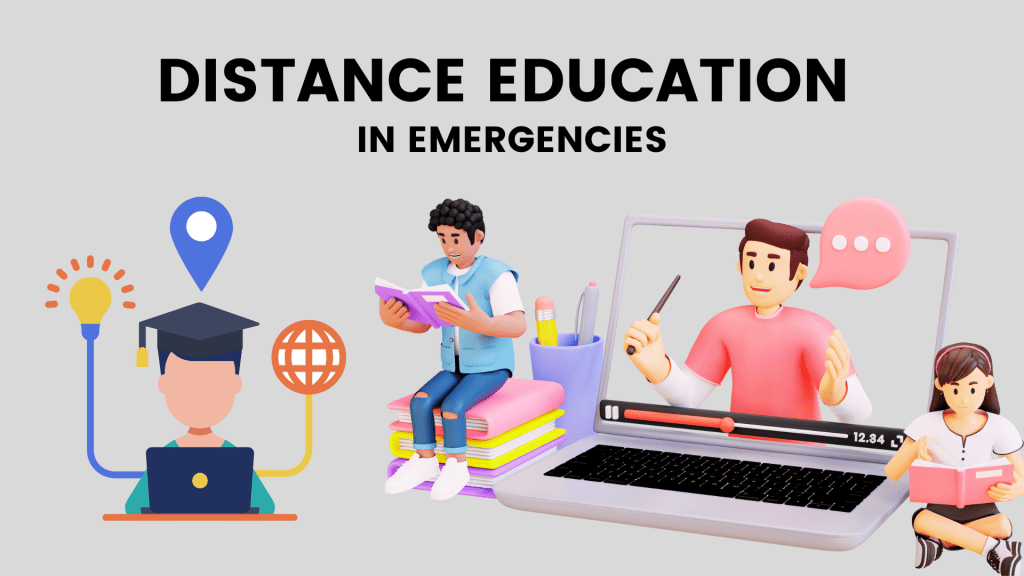| Case Study Title | Background Paper: Distance Education in Emergencies |
| Date Published | 06Aug2022 |
| Type of Client | Humanitarian Organization |
| Focus Area | Education |
| Case Synopsis | We were tasked with developing a background paper for our client on distance education in emergency settings. This background paper was commissioned by our client and authored by Altamont Group, led by Sajida H. Shroff with support from Colette Azzi, Elizabeth Bruce, and Sameen Fatima. The paper, which followed the structure of our client’s Minimum Standards, provided evidence-based tools and guidance for those working in distance education settings in emergency situations. |
| Case Summary | Qualitative data gathering and close collaboration with our client’s Distance Education Reference Group (DERG) supported the development of the background paper, alongside multiple drafts for the exchange of feedback. The paper followed the structure of the client’s Minimum Standards and focused on four key areas identified by DERG, namely: •Building Teacher Capacity for Design and Delivery of Distance Education, •Enabling Policies for Distance Education and Digital Fluency, •Curating, Creating, and Contextualizing Content, and •The Ed Tech Landscape and Selection for use in Distance Education. We also developed a matrix of 325+ free, open access resources in various languages, including toolkits, platforms, resource banks, and white papers, mapped and curated according to their focus on the four key areas. We delivered a slide deck and presentation of the background paper for three client webinars, providing evidence, tools, and guidance to those working in distance education settings in emergency situations. Altamont Group, working in consultation with the client’s Distance Education Reference Group (DERG), adopted a participatory and collaborative process that allowed, to the extent possible, DERG members’ involvement in collecting resources in the development phases of the paper. Over the years, Altamont Group has partnered and worked with global organizations such as the World Bank, NATO, UNESCO, UNICEF, UNHCR, CAMFED, the Global Innovation Fund, and Mercy Corps. Altamont Group also works extensively with governments, including the US Secretary of State, the Kingdom of South Arabia, Global Affairs Canada, and the UAE, to name a few. Altamont Group’s clients are frequently returning clients, illustrating that AG’s approach and its unique expertise are highly valued. |
| Background | The objectives of this paper were as follows: •To identify major challenges, opportunities, lessons learned, and the most frequently applied Distance Education practices; •To present quick guidance tips on three focus areas of Distance Education strategies, that is, Teacher Professional Development, Technology for education, and enabling policies for Distance Education in emergencies; •Present a mapping of existing resources on Distance Education in emergencies |
| Problem | The problem sought was on Distance Education in Emergencies and this Paper authored by AG composed of an overview, followed by strategies to ensure that quality, safe, relevant, and equitable Distance Education is provided as required to all individuals affected by emergencies. These strategies were in keeping with the three focus areas: •Teacher Professional Development. •Technology for education. •Enabling policies for Distance Education in emergencies. |
| Solution | This Background Paper covered specific challenges, lessons learned, practices, and came up with actions that need to be considered when aiming to provide quality, principles-based distance education (DE) in emergencies. This Paper went further and highlighted inclusion and equity to be key guiding principles for education in general and called for their application across all education modalities, including Distance Education. The Paper presented three things: •Useful ideas and actions for planning, offering, or monitoring and evaluating DE in emergencies, accompanied by examples of possible adaptations of key actions in various situations to account for the wide range of contexts in which emergencies occur; •Background information and definitions to enhance clarity for all readers; and •Advice on three focus areas: Teacher Professional Development in DE, technology for education, and enabling policies for Distance Education in emergencies; this advice is complemented by evidence-based recommendations for tackling practical difficulties. |
| Impact | Through this paper authored by Altamont Group, it was noted that requiring electricity, internet connectivity, and hardware is the primary technical challenge in accessing online Distance Education by people in low-income countries who are affected by emergencies. Moreover, researchers noted that the technologies used most often to provide access to education for refugee learners are mobile phones, tablets, computers, and, less frequently, radio. For instance, after the closing of schools due to COVID-19 and the swift transition to Distance Education around the world, EdTech innovations evolved, especially low-and hi-tech solutions. In this regard, international organizations in the humanitarian sector took part in promoting and implementing EdTech innovations. For example, our client initiated a review of the challenges, lessons learned, and best practices in the response to COVID-19, which resulted in our client Mapping Report: Distance Education in Emergencies. |
| Conclusion | The paper which Altamont Group developed; •Followed the structure of client’s Minimum Standards, •Provided evidence-based tools and guidance for those working in distance education settings in emergency situations. The qualitative data gathering and collaboration with the client Distance Education Reference Group (DERG) ensured the development of a well- informed and comprehensive background paper. The matrix of resources also provided access to over 325 free, open access resources, organized according to their focus on the four key areas identified by DERG, namely building teacher capacity, enabling policies, curating and creating content, and EdTech landscape and selection. The slide deck and presentation of the background paper during the three client webinars further helped to disseminate the valuable knowledge and resources to a wider audience. Overall, the paper and matrix of resources provided our client with a valuable tool to support distance education in emergency settings, ultimately helping to improve the quality of education in such situations. |

